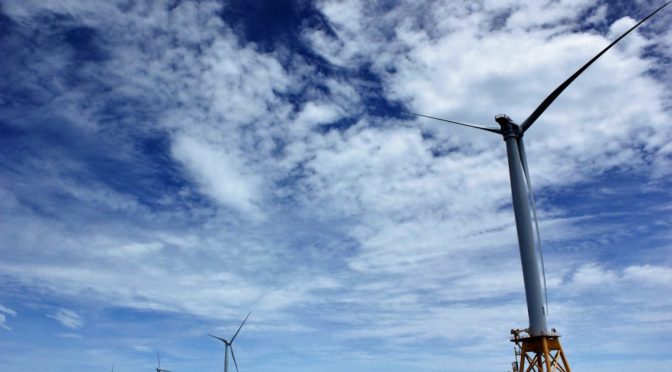Molly Seltzer is a George Washington University Shapiro Traveling Fellow. Her photojournalistic project, Electric America, documents the American energy landscape.
Life on Block Island runs a couple of minutes slower than on the mainland. But “island time” does not refer to the leisurely pace of the island lifestyle, but rather to the quality of the electricity– the clocks literally run slow.
For 92 years, the island ran on electricity made from diesel fuel. While household appliances are designed to run on electricity at a frequency of 60 hertz (hz), the Block Island Power Company’s (BIPCO) diesel generators were not equipped to manage and equate load and generation with the precision of mainland grid operators. This means that the island’s power routinely ran between 59 hz and 61 hz, or a range even more dramatic than that.
The result was electric clocks that could not keep time, and appliances that wore out years ahead of schedule because of Block Island’s poor “quality” electricity.
For this reason, Block Island is one of the few places in the country where people not only notice the quality, reliability and source of their electricity supply, but they care about it. It directly impacts their businesses, costs and schedules.
Most residents had switched to battery operated clocks, and saw replacing broken appliances, ruined by the 59 hz electricity, as an unavoidable expense. It was simply part of life and part of running a business on the island.
Until they turned to wind power.
What wind power means for Block Island locals
On May 1, 2017 Block Island began running on wind power supplied by Deepwater Wind’s Block Island Wind Farm, comprised of five large turbines that sit three miles off the island’s coast.
It was a historic moment for residents and for Block Island Power Company, which officially shut down its diesel generators and began receiving power from the turbines.

One important effect of the new power source is the time. The first thing Judy Gray, a former meteorologist for NOAA and longtime Block Island resident, noticed was the steadiness in electricity supply.
“Our clocks haven’t changed! I set it one minute slow and it was one minute slow a week later. I couldn’t believe it,” she exclaimed excitedly.
“The fact that we’re getting good power has not really been brought up,” said Judy’s partner Jules Craynock, also a former NOAA scientist. Prior to the island’s switch to wind power, Jules had recently replaced a new dishwasher that had been used less than 100 times, which he suspects was a casualty of the island’s poor quality of electricity—a familiar experience for many residents.
Most local islanders recognize the value of getting off of diesel. One of the diesel generators caught fire last year and that cost was passed along to ratepayers. Along with the danger and pollution of diesel, the cost of electricity for residents was directly tied to the world oil market. Impacts to supply abroad and spikes in world demand meant high prices on the island.

That’s almost triple the national residential average of about $.13/kWh. Gross electricity cost could be as high as 60 cents per kilowatt hour on Block Island.
Norris Pike, a fourth generation island resident, applauds the achievement. His family first moved to the island to teach the original settlers how to fish. A home builder and now the Vice President of BIPCO’s Board of Directors, he was staunch in his advocacy for the turbines and an electrical connection to the Rhode Island mainland. He recalls his trips driving home from college in Boston during the oil crisis.
“We could only get a gallon at a time, and we would wait in line with 50 to 70 other cars to get that gallon. I said to myself right then that this has got to stop.”

The connection to the mainland also means that when the wind turbines are not producing power, the island can receive electricity from Rhode Island, and officially retire the diesel generators. The generators now exclusively serve as back up generation in a last resort scenario.
So are the residents happy about the change to island time?
To Ms. Gray, the answer was crystal clear: her clocks run right. She is no longer considering investing in an external uninterrupted power supply to serve her house. And she can see her electricity source at any time.
She giddily looks out over her red picnic table and cherished garden on the front porch to see the wind turbines spinning ahead, happy to know she is utilizing a resource well-endowed to the island.
aweablog.org

